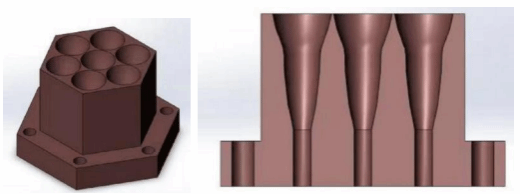Together with major research institutions and platforms including the Spallation Neutron Source Science Center and the Songshan Lake Materials Laboratory, DGUT has recently produced a number of successful findings.
The special project "Primary Gravitational Wave Telescope Receiver R&D" (leading organization: Institute of High Energy Physics, Chinese Academy of Sciences) of Associate Professor Wei Yadong and his team under the National Key Field R&D Program "Gravitational Wave Detection" received approval from the Ministry of Science and Technology in 2022.
To increase China's ability to detect primary gravitational waves and delve into questions about the cosmos' infancy, scientists involved in the project will build a 40 GHz primary gravitational wave telescope receiver. project "Research on Preparation of Primary Gravitational Wave Low-Frequency Detector Array" (program fund: RMB 6 million) has been taken on by DGUT, and with it comes the responsibility for the development of not less than 150 detectors needed by the receivers using micro-nano processing technology, as well as the preparation research of focal plane superconducting edge detector array, the key core device of the primary gravitational wave telescope receiver. The advancement of domestic frontier scientific fields like microwave radiation, synchrotron radiation, astronomy, etc. will be greatly aided by the development of fabrication technology for a primary gravitational wave low-frequency detector array.

The special project “High-Performance and High-Power Femtosecond Laser for Manufacturing” (leading organization: Songshan Lake Materials Laboratory) of Professor Sun Jinghua and his team under the National Key Field R&D Plan “Additive Manufacturing and Laser Manufacturing” received approval from the Ministry of Science and Technology in 2022. Research on Broadband Frequency Doubling and Ultraviolet Sum Frequency Module is a project undertaken by DGUT (program fund: RMB 1.86 million). Using frequency doubling and frequency doubling of mJ femtosecond laser pulses, this program aims to generate femtosecond laser pulses with high efficiency and good beam quality. The in-depth exchanges and technical cooperation between universities and enterprises under the program are utilized to fully combine the advantages of colleges and universities in scientific exploration, and strengthen collaborative innovation and achievement transformation of production, education, and research. This project has allowed the scientific and technological community to break the foreign monopoly on high-power femtosecond technology and to test the market. As a result, the ultraviolet femtosecond laser has emerged as a crucial tool in the precise processing of semiconductors, metals, and other hard and brittle materials, as well as other scientific research and production, propelling China to the forefront of the global laser manufacturing industry.

Through its collaboration with the China Spallation Neutron Source Science Center (leading organization) and Sun Yat-sen University, the Interdisciplinary Research Center was approved as a Guangdong Key Laboratory of Extreme Conditions (discipline in 2023). The center's mission is to study and develop internationally advanced critical technologies in three areas: environments with high temperatures and/or electromagnetic fields, as well as those with a polarization of inert gases. As a result, not only can we increase the quality of basic and applied basic research in Guangdong Province and even South China, but we can also contribute to the development of quantum, materials, life, high-end medical devices, and other scientific and technical disciplines. Concurrently, we will step up our efforts to ready the site for the future National Key Laboratory for Extreme Environments.



![]()